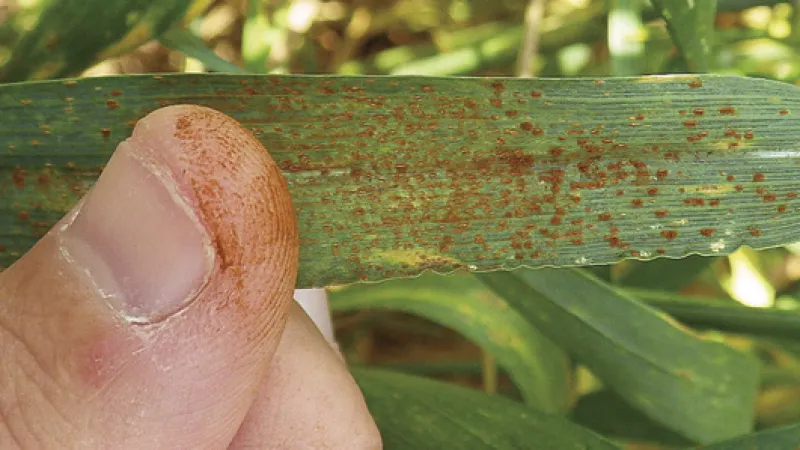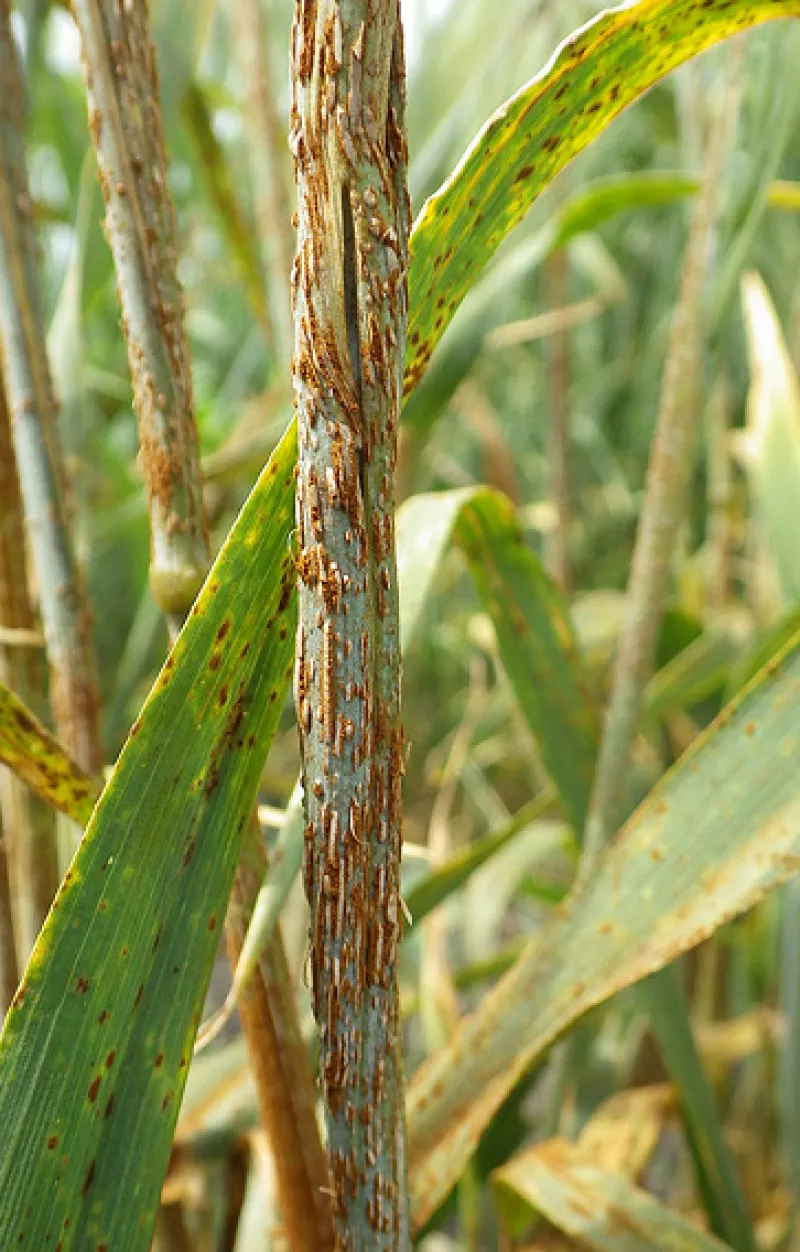Cause and signs of disease: Stem rust is caused by the fungus Puccinia graminis f. sp. tritici. The most characteristic signs of the stem rust pathogen are irregular-shaped pustules filled with dark red-brown spores erupting through the plant tissue.
Although pustules are found primarily on stems and leaf sheaths, the leaves, glumes and awns also may be infected. Pustules are generally elongated and have jagged edges on the wheat stem (Figure 5). Stem rust can result in severe lodging and reduced yields and test weights.
Disease cycle: The alternate host of stem rust is the common barberry, a plant in which the fungus may overwinter and go through sexual recombination. Common barberry plants were eradicated in the spring wheat region in the 1950s to reduce the chance of this fungus overwintering and undergoing rapid genetic changes. Consequently, infection in North Dakota usually is caused by spores blown into our region from states to our south, similar to leaf rust as seen in Figure 4.
The stem rust fungus infects at warmer temperatures than leaf rust, with an optimum temperature for development near 80 F, and development stopping at temperatures above 100 F. These temperatures often coincide with the later stages of maturity of wheat in North Dakota, resulting in a late-season appearance.
Most spring wheat and durum wheat varieties currently grown in North Dakota are resistant to the races of stem rust prevalent in the U.S. A few winter wheat cultivars are susceptible to prevalent races.
A highly virulent race group of the stem rust pathogen was identified in East Africa (originally referred to as race UG99). The Ug99 race group continues to evolve to generate new highly virulent races and most available spring wheat varieties are susceptible to these new races, which will pose a threat to our wheat crops if the virulent races arrive in the U.S.
The U.S. Department of Agriculture’s Cereal Disease Laboratory in St. Paul, Minn., and other agencies are monitoring movement of Ug99 and screening wheat varieties and new germplasm for resistance. Resistance is the primary means of control for stem rust.






